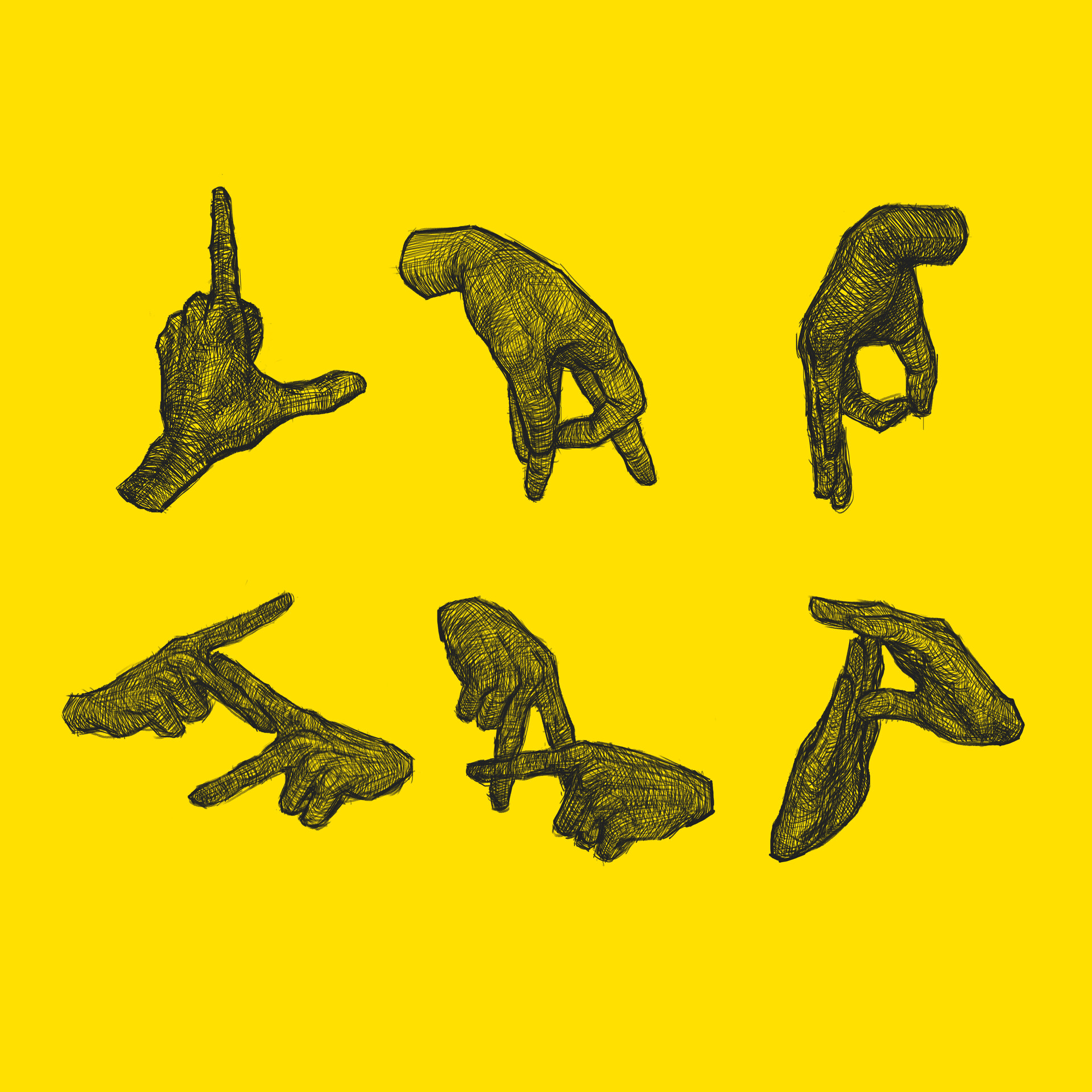Thieves Sign
Origins
The Thieves Sign was designed by and for thieves working together on jobs were silence is imperative. Primarily it was used so that two or more thieves could communicate silently as long as they had use of one of their hands and are within eyesight of each other. Initially, thieves only used a small handful of signs to tell each other to wait, hide, or watch ahead. But over time thieves have developed it to form more complex sentences and thoughts, though, for the most part, it stayed within the realm of skullduggery.
Until a former thief taught his deaf and mute children how to use the Thieves Sign. The father taught his twins, a son and a daughter because he had grown frustrated at his failings of properly communicating with them. Teaching them the mechanics of the sign language was easier than he thought and the children picked it up quickly. They even began developing their own words, having conversations even he did not understand. After seeing his children's ingenuity he asked them if they would help him develop the language further so that they could teach others with similar struggles how to speak with these gestures. His children agreed and they set upon developing a full language.
Some years later, the language, the three developed together, now simply called Sign, has spread to numerous communities and villages. It has become quite popular amongst deaf and/or mute villagers and workers, the ability for a deaf farmer to communicate with his workers has been a boon for many. It has even begun to help lessen the stigmatism that many of those that struggle with speech and hearing face on a day to day basis.
Though it hasn't quite reached its potential and stays primarily in farming communities and villages, it has started seeing some use in larger towns. Which has begun to garner the attention of the thieves who still use their version of the Thieves Sign during their nightly escapades. The thieving community is not happy that their secret language being leaked and having spread to the common folk.
Origins
Common Use in Communities
The language of Sign is becoming increasingly popular as time passes, its use benefitting those that lack the ability to speak or hear the most. Though it hasn't spread nearly enough to be recognized by any state as an official language its use is continuing to spreads further across the continent. Usage of Sign has greatly improved the communication abilities of hundreds, even those that do not struggle with hearing or speaking have begun to learn it so that they may understand others better.
To this day, years after they first developed Sign, the father and his two grown children travel the land and teach common folk how to speak it. Many being delighted at the language not only as a novelty but as a useful tool to better communicate with business partners, friends, and family members that may be deaf and/or mute.
Many farmers have even begun teaching their workers basic Sign forms as a means to more easily communicate from afar. If a worker is out of earshot but can still be seen, a simple sign can be raised above a worker's head to indicate a variety of things. Including, "All done here" "Come here" and "Wait there".
Common Use by Thieves
For thieves, the practice is much different, as the originators of the language they use it in a much different way. Admittedly the thieves that incorporate this language into their repertoire use a much simpler version than what has been developed for common use by non-thieves. But this works fine for the thieves, as they only use it to communicate simple and easy to follow communications and directions.
For example, if two thieves are breaking into a home to burgle, one will keep on the streets some distance away from the thief trying to crack the lock of the door to keep an eye out for guards. If this thief sees a guard they will flash a quick sign to the thief at the door, who will then duck away and hide from the passing guard. Or, if the two thieves find themselves separated with the no safe way of reaching each other, they can flash the sign for "Meet at hideout" and be on their way.
Thieves aren't happy about it
The thieves who use this form of sign language during their nightly skullduggery are not pleased with the spread and popularity the language has garnered within the common population. Especially since, city guards and officials have begun to learn bits of their 'secret' language from 'helpful' citizens, making life much more difficult for them to communicate safely between each other. Some thieves are beginning to workshop a new and even more discreet language but so far nothing has been as effective as the Thieves Sign.



Comments